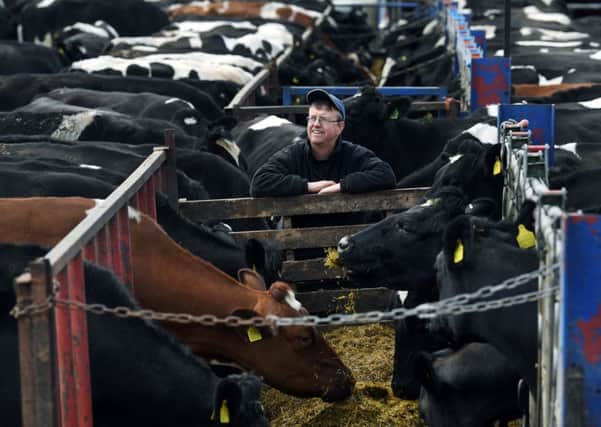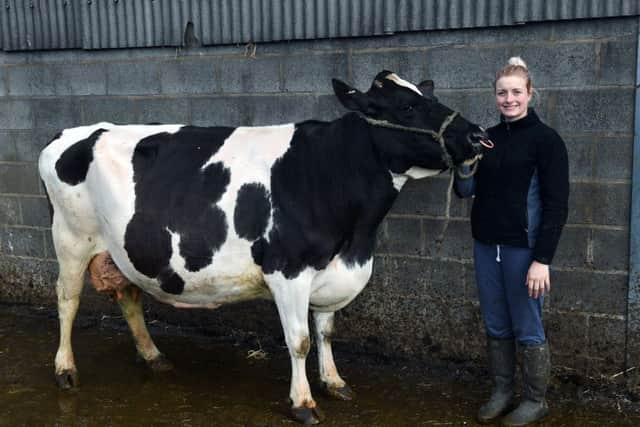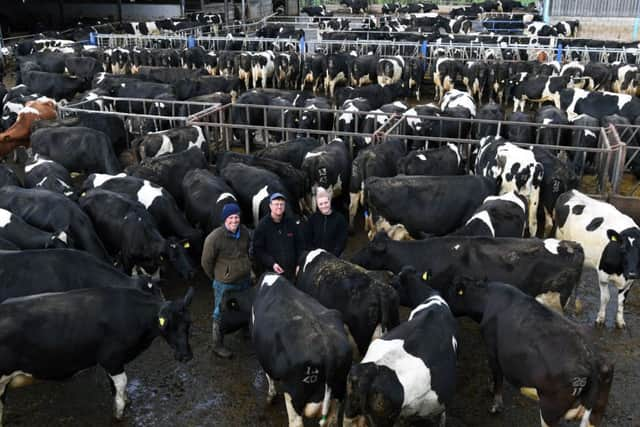How keeping faith with the Friesian has paid off for the Howarths in Wilton


There are those who consider themselves wise old heads or farm consultants who may be rubbing their chins right now, but also perhaps lending a wry smile at how husband and wife, Sam and Wendy Howarth, have currently succeeded in their quest at Hollies Farm, Wilton near Thornton-le-Dale.
The British Friesian breed, seemingly in terminal decline in the 80s and 90s; organic farming still not wholly accepted by many farmers as a way forward; and talk of the next generation following on with the continuing pressures associated with making it all work, and inevitably more mouths to feed as they start their own families make Sam and Wendy’s recent achievements all the more laudable.
Advertisement
Hide AdAdvertisement
Hide Ad“We decided to expand the business to create the employment for our children Sally, Jack and Rosie if they wanted to work that way,” says Sam. “Sally and Jack are both doing so and Rosie works for racehorse trainer Roger Fell while also helping out at home. Our milking herd now runs to 430 pedigree British Friesians that suit the way we farm, our land and our organic system producing a herd average of around 6000 litres per annum.”


Fifteen years ago Sam and Wendy purchased Leas Farm in Pickering, where the dairy herd is based. Just over 300 acres is owned at Wilton with a further 350 acres owned at Leas Farm including a separate block to the higher side of town having purchased various parcels of land since the first acquisition of 173 acres. Rent of further land takes the farming business total to around 1000 acres.
“Everything we farm is organic. We’ve been that way for about ten years and it has helped us massively. When we started there wasn’t a lot of information about how best to farm organically and we have undertaken most of what we’ve done through trial and error.
“The organic milk price has been up and down. Dairy Farmers of Britain which we were part of went bust and that set us back a couple of years, the recession of 2008-09 didn’t help and the organic market was at one time over supplied and demand wasn’t there as it is now.
Advertisement
Hide AdAdvertisement
Hide Ad“Today there is now a substantial demand for organic milk specifically in the Greater London area where 90 per cent of production is consumed.


“ARLA is committed to organic milk. It has a milk swap agreement with OMSco the organic milk suppliers cooperative and ours has a fair ride out. The tanker picks up from Leas Farm every other day, collecting around 13,000 litres as well as from two other farms. The milk is destined for ARLA in London.
“British Friesians were on the slide in the late 80s and early 90s and one of the problems at the time was there weren’t sufficient good bulls around, but over more recent times AI companies have seen increased demand for the breed due to its longevity and lactations. Ironically, Wendy’s father Ernest Lunn who bought Hollies as a sitting tenant in 1982 had British Friesians and it was Wendy and I who tried going progressive with the Holsteins before being disillusioned with their poorer fertility and longevity and going back to the British Friesian.”
Sam has just completed a three-year term as British Friesian Breeders Club chairman. He’s bullish about the breed’s present and future.
Advertisement
Hide AdAdvertisement
Hide Ad“The cows average around six to seven lactations and we have quite a few girls in the herd at nine, ten and twelve years old. Black Isle Olivia won in the first ever Iron Grandma class at the Dairy Expo in Carlisle last week. She’s twelve years old and back in-calf again this year.


“There are less British Friesian herds around than there used to be decades ago but the breed is definitely experiencing a bit of a comeback. Semen is now being exported worldwide to over twenty countries and with the rush from Holstein breeders to use the British Friesian to reduce the size of their cows and provide more easy care there has been a shift in breeding emphasis.
“The British Friesian with the Holstein is what’s called an invisible cross as both breeds retain their pedigree status while the Holstein benefits as a more sustainable Holstein Friesian. We mostly use AI on our herd. We were running bulls up until five years ago.”
Sam has developed an organic beef side to the farm using Aberdeen Angus and Belgian Blue semen on some of his dairy herd with their progeny going to Dovecote Park who supply Waitrose.
Advertisement
Hide AdAdvertisement
Hide AdHaving grown the dairy herd from 200 to over 400 in a decade, having seen the renaissance of the British Friesian and having experienced the rise in demand for organic milk Sam believes the market is in a better position then ever.
“We’re still above 40 pence per litre at the moment and ARLA is committed to organic milk, higher value products and branded produce. They’re looking to double the amount they sell by 2020.”